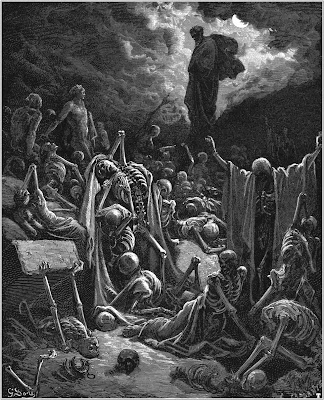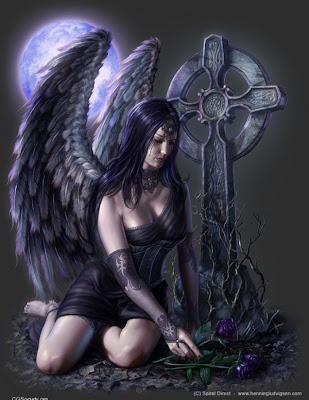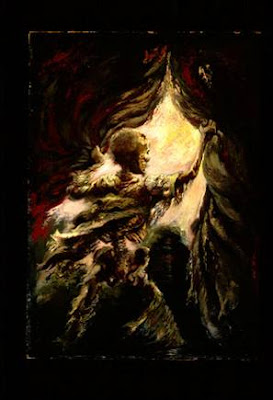 The Night of Enitharmon's Joy (1795), often refered as The Triple Hecate or simply Hecate, is a 1795 colour print by English artist and poet William Blake depicting Enitharmon, a female character in his mythology, as a androgynous Hecate, Greco-Roman goddess of magic and the underworld, in a nightmarish scene with fantastic creatures. The picture also alludes the Three Fates. Despite this allusion, critics point out that the primary source for Blake's inspiration is Shakespeare, from Macbeth, where there are similarities with the animals illustrated in this painting.
The Night of Enitharmon's Joy (1795), often refered as The Triple Hecate or simply Hecate, is a 1795 colour print by English artist and poet William Blake depicting Enitharmon, a female character in his mythology, as a androgynous Hecate, Greco-Roman goddess of magic and the underworld, in a nightmarish scene with fantastic creatures. The picture also alludes the Three Fates. Despite this allusion, critics point out that the primary source for Blake's inspiration is Shakespeare, from Macbeth, where there are similarities with the animals illustrated in this painting."Fillet of a fenny snake,
In the cauldron boil and bake;
Eye of newt and toe of frog,
Wool of bat and tongue of dog,
Adder's fork and blind-worm's sting,
Lizard's leg and owlet's wing,
For a charm of powerful trouble,
Like a hell-broth boil and bubble."
(Macbeth, IV.i)
Enitharmon is a major female character in William Blake's mythology, playing a main part in some of his prophetic books. She represents the Feminine Will upon the patriarchal Christianity. It's a quite obscure figure representing spiritual beauty and poetic inspiration. She is symbolised by the moon and she is characterised by Pity. As poetic instinct, Enitharmon is represented as being born of the sexual problems that happen during puberty. She is a goddess that represents what cannot be found within nature. In her connection to space, she represents the psychological aspects of unbound space upon the mind.
After her birth, Enitharmon declares that women will rule the world, with Man being given Love and Women being given Pride. This would create within men a fear of female dominance that would in turn bring them under control of the females. In her sexual system, there are four parts: desire, sperm, frustration, and finally war. These are represented by sexual desire being contained to body, which leads to guilt, followed by frustration and ends with erotic dreams. In the last stage, war is the ultimate result of sexual repression. This war is connected to general war and to energy as a whole. Sex is supposed to lead to imagination and love. Love is supposed to leave one to a higher state, and the perversion of sexuality, in Blake's view, leads to destruction.
The Female Will is born from an object of affection refusing to give up its independence, and the concept represents what prohibits an individual from being able to have true vision. (wikipedia)
I think that it worths to mention my observation that this obscured myth has striking similarities with Wilhelm Reich's theory and work of "sexual economy" in libido and patrism vs matrism.



















































.jpg)



